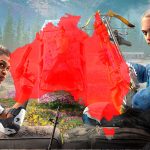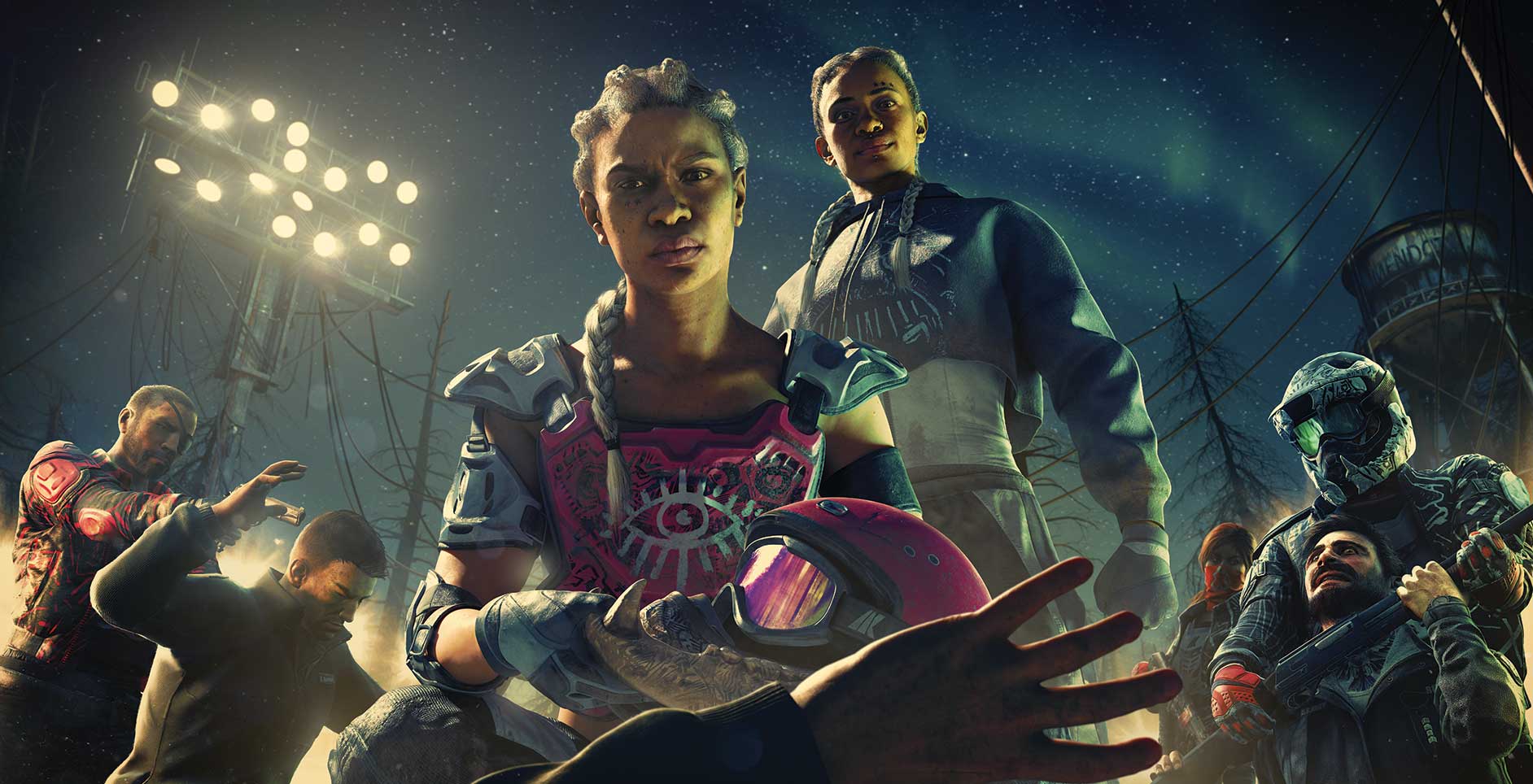As I launched a circular saw blade from a crossbow into the back of an unsuspecting enemy’s head, and petals of a nuclear super bloom floated past my next target, it occurred to me how strange it was that Far Cry has never ventured into the post-apocalypse before. It seems like a natural fit; Far Cry’s outlandish escapades feel right at home in the wasteland. The franchise’s usual hallmarks – capturing outposts, hunting, liberating prisoners, managing moral conflict – all transpose effortlessly into a world coming back to life following nuclear winter. Far Cry New Dawn, conceptually, is a no brainer.
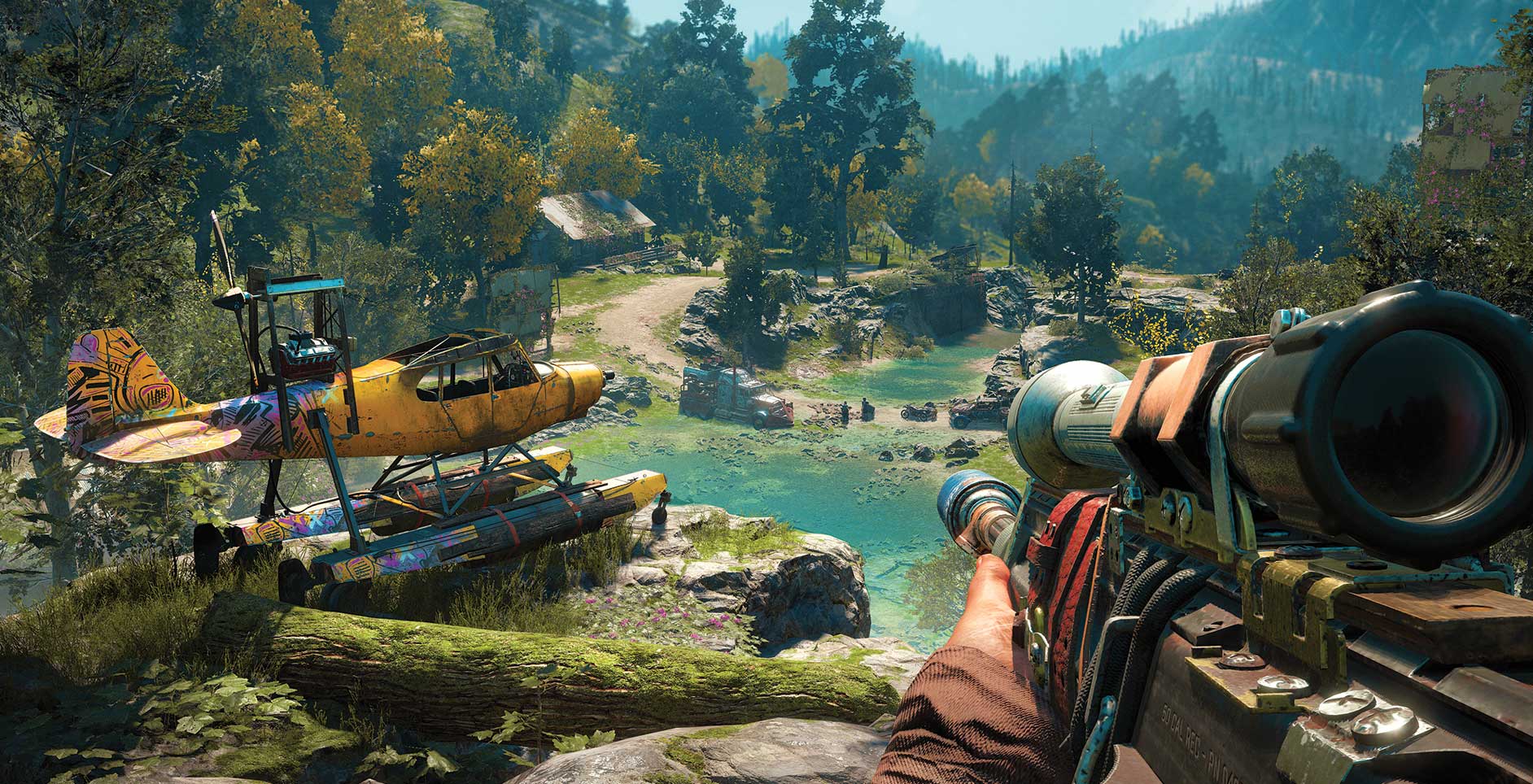
But it is the first time the franchise has ventured into the post-apocalyptic first-person action game and the first time the franchise has adopted somewhat of a serial approach. New Dawn picks up some seventeen years after the events of Far Cry 5, which – as you can imagine – conclude rather dramatically. As James Nadiger, the game’s Associate Narrative Director, notes, it is a “standalone sequel”; whilst you benefit from having experienced the conclusion of Far Cry 5, “you can jump right in.” The introduction, all too familiar this many iterations deep, propels an unwitting protagonist into a dangerous mission, only for things to go seriously wrong almost immediately.
Quickly you find yourself amidst are a tumultuous world of warring factions, fighting for survival, but ultimately the future. Of course, Far Cry is all about its baddies. Out in the wasteland, what remains of Eden’s Gate, the cult central to Far Cry 5’s plot, looms, but this time not one, but two big bads are introduced. New Dawn’s sinister set of sibling villains, the twins Mickey and Lou, the fight is all about the present. They lead the Highwaymen, roaming bandits who capture and consume mercilessly, taking all and leaving nothing. In the time I was able to play, I only encountered the pair once, but it was enough to leave a lasting impression on me. That was certainly the objective of Nadiger, hoping to create a villainous threat that would “stand out”.

“What unifies the Far Cry villains is that they’re utterly convinced that what they are doing is the only sane way to get by in this world. And they’ll have a chance to try and convince you but if you can’t see things their way then you guys have a problem. In that respect, the Twins are a good entry into the pantheon of Far Cry villains.”
“Just having two of them shakes it up as well because we’re so used to these one-on-one conversations. Just the dynamic of having people share this power is interesting when you get face-to-face-to-face. And how they each react to you as you become a bigger pain in the ass.”

You side with the people of Prosperity, an idyllic speck of sanity, clutching on to the ways things once were, determined to bring about a brighter future for the children amongst them. New Dawn’s narrative and gameplay seemingly revolve around their objective: reclaiming Hope County and rebuilding civilisation. Hence, familiar missions present themselves, recruiting new allies to the cause and liberating sections of the map.
It’s a colourful world, and the cast of characters I had the opportunity to interact with seemed plenty colourful as well. A variety of caricatures “with a twist” present themselves, each with their own flare or “attitude” as Nadiger puts it. The colour palette is the most vibrant I recall a Far Cry game as having, with nature reclaiming mid-west America. New Dawn meets expectations of the post-apocalyptic sub-genre, embedding a decent amount of environmental storytelling, inviting you to read more into a character or solve a puzzle by detecting clues around you. On occasion this was subtle, maybe markings on the wall. Other times, readable notes provided background or context, or a vital clue in completing a puzzle.
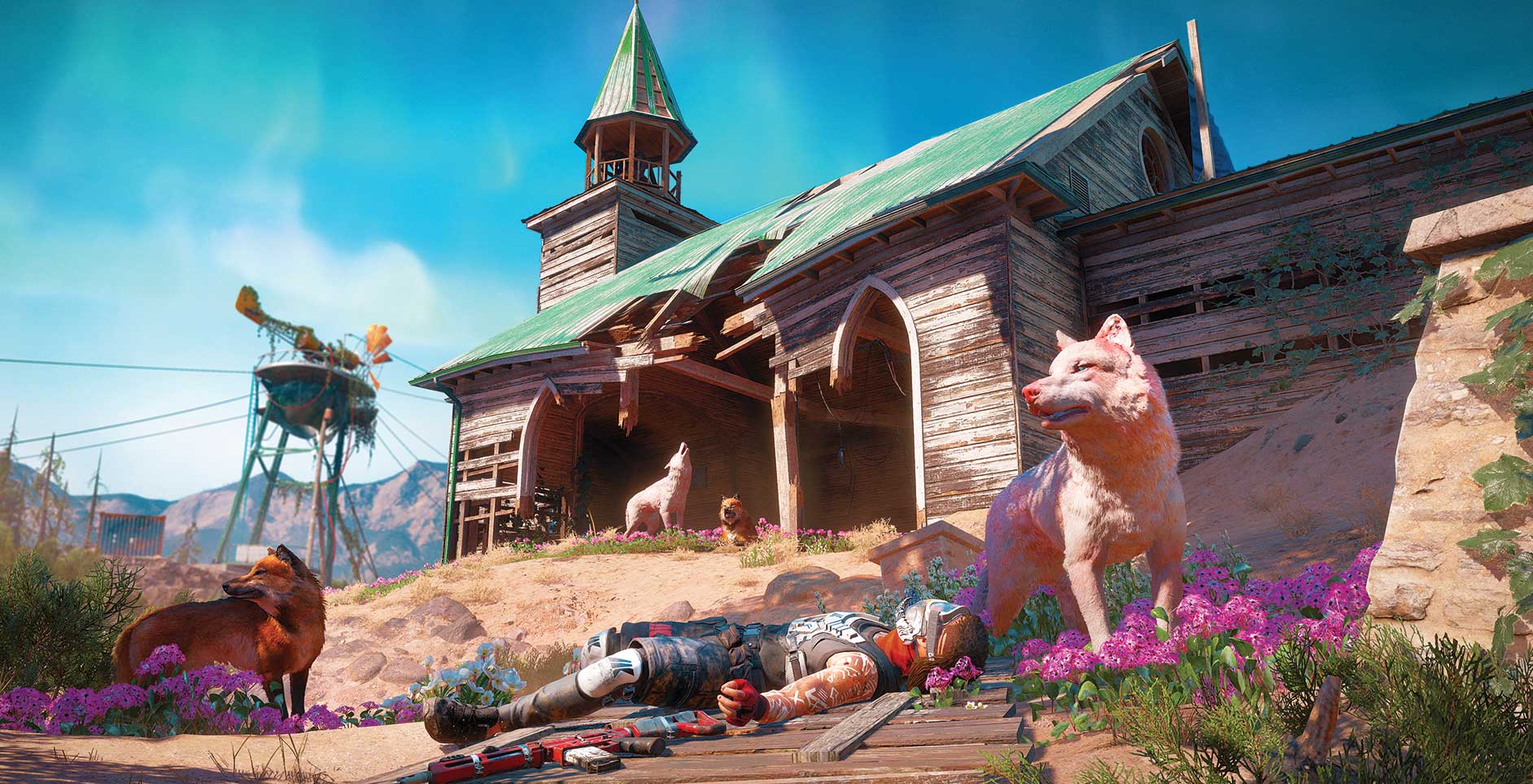
You’ll seemingly spend a substantial amount of time scouring through every nook and cranny of New Dawn’s world. Scavenging plays a critical role in the game, which boasts light RPG elements, in another fresh development for Far Cry. Upgrading your home base, its stations, your weapons and vehicles all require a variety of components to be tracked down in the world, much in the way animal pelts have enabled you to upgrade your character previously.
Completing missions and side quests grant you skill points which you can use to level up your character in other capacities, increasing the amount of ammo you can carry, granting you the ability to grapple and wield up to four weapons. Animals, in various slightly mutated forms, are still there to hunt and serve various trading purposes. Rather than scavenging for the resources you require, it seems you can instead hunt particular animals skins and trade them for copper, or duct tape, or whatever you require.

Fortunately, there is a variety of ways in which to acquire the materials you require. I took it upon myself to go on the hunt for duct tape in order to unlock a particular silenced assault rifle that took my fancy. Each location you discover has a type of material associated with it you can collect, which is marked on the map, which made it easy to locate what I was after. Whilst driving between locations, I was alerted to a falling supply drop which grants you a mixture of materials assuming you can beat the Highwaymen there.
Spontaneous events like this add to the drama in the world, but not its originality. I can’t recall supply drops in recent releases, but the others feel copied across from Far Cry games before it. Freeing prisoners from transport vehicles, stopping supply trucks, chasing down couriers and fending off patrols are all back. I suppose that is to say that I don’t get the sense from the first couple of hours of the game that there is anything terribly new here for those that have been uninterested in Far Cry games before. Fans will appreciate the new additions and changes, but it does not mess with the formula enough to convince me the fanbase will broaden. That’s not necessarily a complaint, however, more a warning.
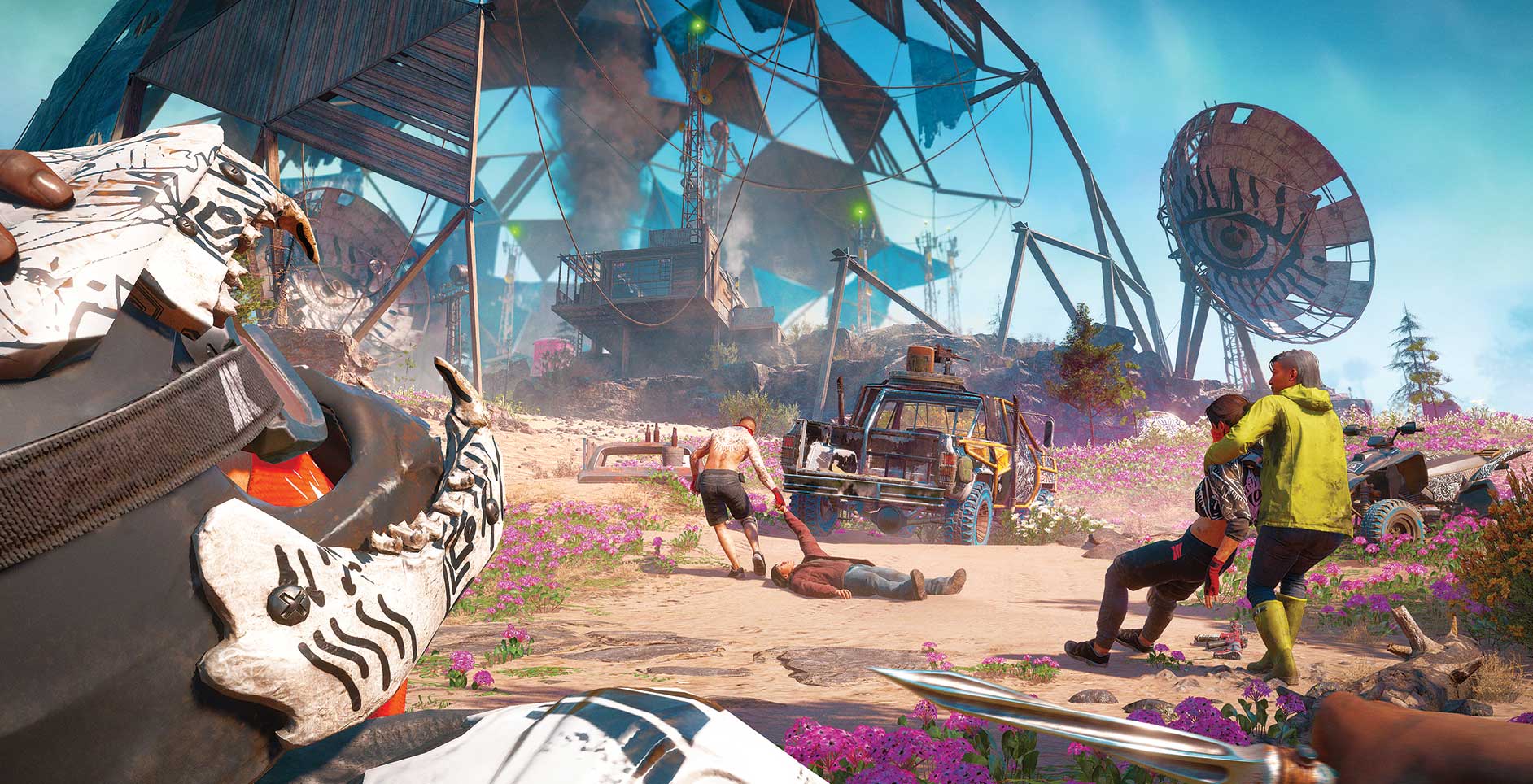
For returning fans, I think there’s enough to be excited about. I consider myself quite a fan of the franchise and the addition of RPG elements, post-apocalyptic setting and the cast of characters – new and returning – is reason enough for me to be excited. Additions such as the Expeditions, which allow you to go off the map to complete special missions and chase better loot, and escalating Outposts are welcome changes. The escalating Outposts allow you to repeat them by essentially handing them back to the Highwaymen for ethanol, the primary resource that allows you to level up Prosperity. Really what both the Expeditions and escalating Outposts offer is better replay value, cooperative fun and perhaps more of a challenge then we’ve seen in past Far Cry games.
Expeditions, escalating Outposts and RPG elements, on top of the very apt setting, are perhaps the major drawcards for returning players. In the time I was given with the game, it was clear that the Far Cry formula remained, but was given a thick, fresh coat of paint that reinvigorates it. At the end of the play session, I was kinda bummed to put the controller down. I had just collected enough duct tape to get that silenced assault rifle I wanted and was ready to make some significant progress in taming the dystopian Hope County. I suppose I’ll just have to wait until February 15th, with eager anticipation.
